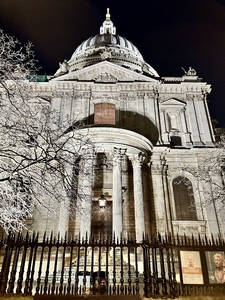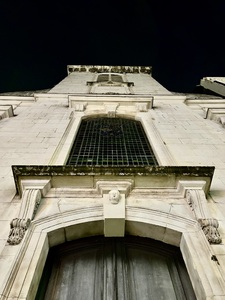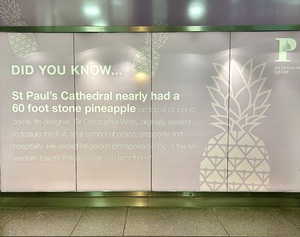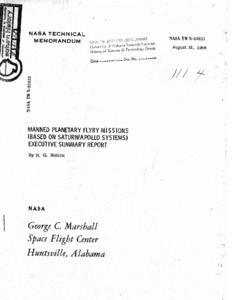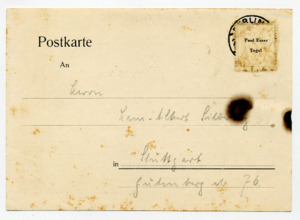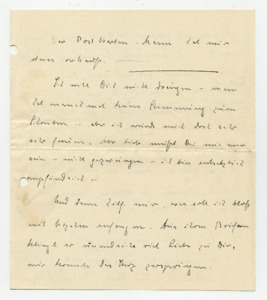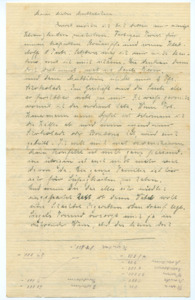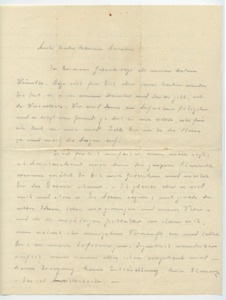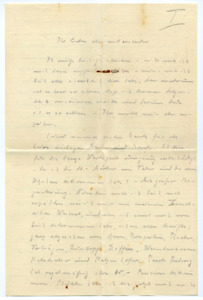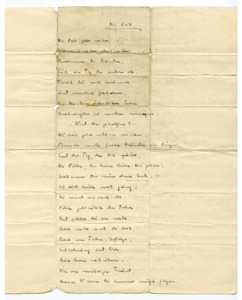
Browse Items (8239 total)
Sort by:
-
St. Paul's Cathedral.
St. Paul's Cathedral dates back to 604. It was destroyed in 1666 due to the London Fire. Sir Christopher was contracted to rebuild the Cathedral as part of the Commission to rebuild London's churches. It was completed in 1711. -
St. Martin-within-Ludgate.
St. Martin-within-Ludgate is a medieval church that dates back to 1437. It was destroyed in 1666 due to the London Fire. Sir Christopher Wren rebuilt it in 1684 and it remains largely unchanged. -
Information Board in London.
This information board exists around St. Paul's Cathedral. It discusses how Sir Christopher Wren, the architect of St. Paul's, wanted to feature a pineapple in the Cathedral because it is a symbol of peace, prosperity, and hospitality. It states that there are two golden pineapples on top of two of the western towers. -
"Manned planetary flyby missions (based on Saturn/Apollo Systems) : executive summary report."
This report summarizes a study (by North American Aviation, Space Division) of Manned Interplanetary Flyby Missions to Venus and Mars during the period from 1975 to 1982. [The study was a broad but penetrating technical investigation of using a manned flight system for planetary exploration.] The results, along with previously known aspects of manned Mars and Venus flyby missions, vehicles, and systems, were integrated into total mission-system capable of performing a realistic and meaningful planetary exploration program. Manned Planetary Missions are feasible. Attractive multiplanet flyby missions can be performed by Saturn/Apollo systems. However, injected payload and mission requirements developed within the guidelines and assumptions of this study cannot be met with modified S-II or S-IV stages when used with the standard Saturn V Earth-launch vehicle. When using an Earth orbit assembly mode and an uprated Saturn Earth launch vehicle for application to manned planetary flyby missions, the launch vehicle should have a payload capability (2-stage to low Earth orbit) of 400,000 pounds or more for use with M(S)-IVB planetary injection stages. Manned planetary flyby missions provide a means of combining the favorable aspects of both manned and unmanned missions into a unique and highly effective planetary exploration mission-system capable of providing major significant inputs to the scientific and engineering questions concerning the interplanetary medium, our Sun, and our neighboring planets Venus and Mars. -
"Postkarte an Herrn Hans-Albert Silberberg in Stuttgart Gutenbergstr 76."
This postcard was written by Hildegard Nörenberg in Tegel, Berlin, Germany, and sent to her sweetheart Hans-Albert Silberberg in Stuttgart. The reverse of the postcard shows the letterhead of Nörenberg's father's business, Walter Nörenberg Eisenwaren, a hardware store. -
Letter from Hildegard Nörenberg to Hans Albert Silberberg (undated).
Hildegard Nörenberg (1904-1977) was a nurse and midwife from Berlin-Tegel, Berlin, Germany. She immigrated to Alabama in 1956, as her sister Maria, the wife of Operation Paperclip engineer Werner Kuers, had moved to Huntsville, Alabama in the early 1950s. From 1924 to 1932, Nörenberg frequently corresponded with Hans Albert Silberberg, her close friend and longtime love. Silberberg was a music student, composer, and pianist. He died in 1932, at the age of 25. -
Letter from Hildegard Nörenberg to Hans Albert Silberberg (undated).
Hildegard Nörenberg (1904-1977) was a nurse and midwife from Berlin-Tegel, Berlin, Germany. She immigrated to Alabama in 1956, as her sister Maria, the wife of Operation Paperclip engineer Werner Kuers, had moved to Huntsville, Alabama in the early 1950s. From 1924 to 1932, Nörenberg frequently corresponded with Hans Albert Silberberg, her close friend and longtime love. Silberberg was a music student, composer, and pianist. He died in 1932, at the age of 25. -
Letter from Hildegard Nörenberg to Hans Albert Silberberg (undated).
Hildegard Nörenberg (1904-1977) was a nurse and midwife from Berlin-Tegel, Berlin, Germany. She immigrated to Alabama in 1956, as her sister Maria, the wife of Operation Paperclip engineer Werner Kuers, had moved to Huntsville, Alabama in the early 1950s. From 1924 to 1932, Nörenberg frequently corresponded with Hans Albert Silberberg, her close friend and longtime love. Silberberg was a music student, composer, and pianist. He died in 1932, at the age of 25. -
Letter from Hildegard Nörenberg to Hans Albert Silberberg (undated).
Hildegard Nörenberg (1904-1977) was a nurse and midwife from Berlin-Tegel, Berlin, Germany. She immigrated to Alabama in 1956, as her sister Maria, the wife of Operation Paperclip engineer Werner Kuers, had moved to Huntsville, Alabama in the early 1950s. From 1924 to 1932, Nörenberg frequently corresponded with Hans Albert Silberberg, her close friend and longtime love. Silberberg was a music student, composer, and pianist. He died in 1932, at the age of 25. -
Letter from Hildegard Nörenberg to Hans Albert Silberberg (undated).
Hildegard Nörenberg (1904-1977) was a nurse and midwife from Berlin-Tegel, Berlin, Germany. She immigrated to Alabama in 1956, as her sister Maria, the wife of Operation Paperclip engineer Werner Kuers, had moved to Huntsville, Alabama in the early 1950s. From 1924 to 1932, Nörenberg frequently corresponded with Hans Albert Silberberg, her close friend and longtime love. Silberberg was a music student, composer, and pianist. He died in 1932, at the age of 25.
